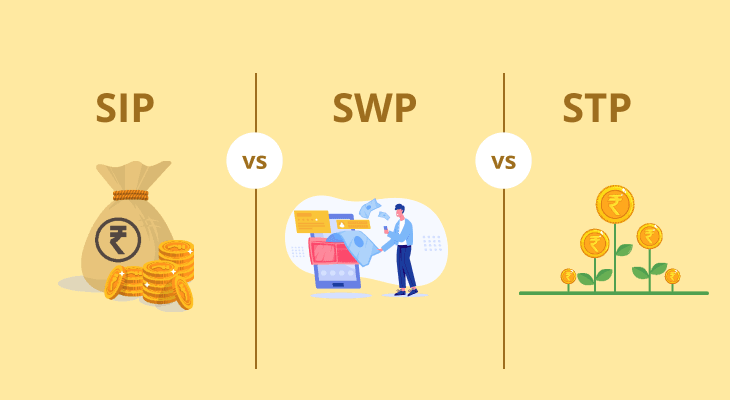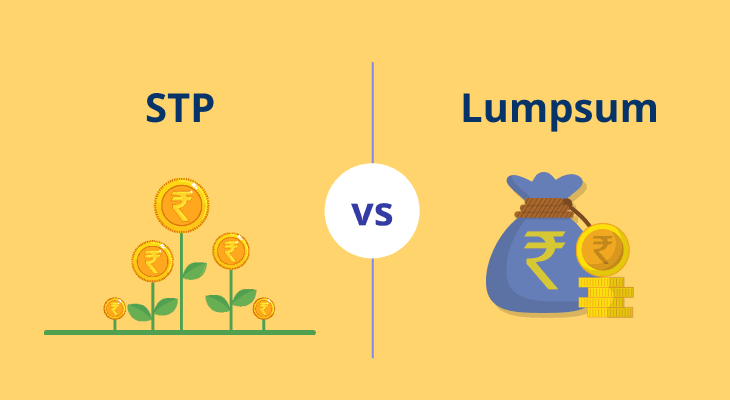
Learn How to Invest in SIP with Our Extensive Guide
Besides considering financial investment instruments matching investors’ future goals, investors have an array of choices in investment methods. A SIP or a Systematic Investment Plan takes pride of place in the Indian investor’s mind as an effective and low-risk investment scheme. Here, investors can invest over a period with systematic payouts delivered on a frequent and fixed basis (say every month, or quarter). These payments continue till the plan is invested in and offer a lucrative income source.
Furthermore, investors use a SIP calculator to decide the amounts they wish to invest as per their needs. The key advantage of a SIP investment is that wealth is built via regular investment as well as the effect of compounding. Learn all about a SIP here and find a systematic hassle-free way to build a corpus!
What is a SIP?
“What is a SIP and how to invest in a SIP?” is a question that plagues Indian investors. However, the answer is simple. A SIP is an investment scheme falling under the mutual fund category. If you invest in a SIP, you can invest small sums of money at regular intervals, in a range of mutual funds. Therefore, a lump sum is not invested upfront.
A SIP effectively minimises your investment risk as it permits you to buy mutual fund units periodically so you tend to spend less in your investment overall. Hence, SIPs may be viewed among cost-effective methods to invest in mutual funds. If an investor invests a set amount at fixed intervals, they automatically stand to make the most of market volatility and wipe out the concern about timing the market. Therefore, with the help of a SIP calculator to invest, SIPs allow investors to put their wealth to work, yet not worry about market shifts.
How does a SIP work?
Rather than an investment instrument, a SIP is a method of investing in a mutual fund. With a SIP, you can invest a fixed sum in a mutual fund at predetermined intervals, either weekly, monthly, or quarterly. Amounts are debited from your bank account on preset dates and units are bought at the mutual fund’s Net Asset Value (NAV). It is possible to invest in a SIP online and use an online SIP calculator to compute amounts invested and potential returns.
A SIP is a disciplined approach to investment. Additionally, with its feature of rupee-cost averaging, you are able to buy more units of a mutual fund when market prices are down and fewer units if market prices rise.
How to invest in a SIP is easy, and you can undertake the process online. However, before you do invest in this method of mutual fund investment, you should learn some aspects of what a SIP investment has in store for you. First, you get flexibility in your investment as you do not have to invest a lump sum initially, and can invest small amounts at regular periods aligned with your cash flow. Besides this, gains you receive are the result of compounding with returns being added to your original investment to grow wealth.
Steps to Invest in a SIP
After you have read all about the nature of a SIP, you may want to know how to start a SIP. The process may differ in some ways depending on the mutual fund company selected, but the process is quite standardised. Here are the steps to invest in a SIP:
Step 1: Prepare the Required Documents
To start a SIP, you need some key documents like your PAN Card, ID proof, and address proof. Additionally, you need bank account details ready. Finally, the documents you provide for SIP investment must align with your KYC information.
Step 2: Conduct the KYC Process
It is mandatory to conduct the KYC process for starting any financial process whether you are investing in a financial instrument or otherwise. You can undertake the KYC process at your bank or at any broker or Asset Management Company (AMC)/mutual fund company via which you are starting a SIP. This process may be done physically or online.
Step 3: Registration with a Broker/Financial Professional
If you wish to invest in a SIP, you can start by using a SIP calculator to decide the amount you wish to invest and find out about potential returns from a particular plan. You may carry out the process of starting your SIP by registering with an official broker or go through the expertise of a financial advisor. At this stage, you can find out about plans according to your financial goals.
Step 4: Select a SIP and Invest
In this crucial step, you must zero in on a plan. Remember to consider risk factors, the number of mutual fund units you wish to invest, and your own objectives. By now you know what a SIP is and how to invest, so it shouldn’t be too hard to select a plan and consider payment intervals and how much to invest at each interval.
Step 5: Fill Out a SIP Application and Submit Details
Whether you apply for a SIP online or offline, the process is the same and an application form has to be filled and submitted. You must submit forms and other details to the mutual fund company via which you start your SIP, with the exact dates of payments and other details. This can be done through the AMC’s online portal or physically at a bank or a post office.
The process of how to invest in a SIP online starts with creating a user ID and a password on the respective AMC website, filling out the application, uploading personal information, and completing payments online. It is important to note that if you go through the online route, you must submit the ADF and give it to your nearest bank branch or opt for billpay/e-mandate/e-nach method of payment.
The offline process involves a physical submission of documents including the application form and a cancelled cheque with your bank details.
Things to Consider Before Investing in a SIP
Once you know how a SIP works, and the process to start, you must consider key factors before you sign up. These are outlined below:
Financial Objectives
Investors have different financial goals which may range from short-term capital requirements to long-term capital appreciation and building a corpus. Assess your financial aims and reasons for investing in a SIP.
Risk Profile
The amount you invest in a SIP must be aligned with your particular risk appetite. You should be aware of how much you are prepared to risk investing on a periodic basis. How much can you afford for a SIP investment? You can easily calculate your monthly or yearly mandatory expenses and find out how much you have for investment in a SIP.
Returns from a SIP
Based on your decision of a SIP investment, you can easily calculate your returns on a periodic basis. Although these may be estimates you compute with the help of an online SIP calculator, you get some idea of how much gain comes from a SIP.
Investment Horizon
Depending on your investment objectives, you should consider how much time you wish to remain invested (you must consider your principal investment amount and returns here too).
What are the benefits of investing in a SIP?
In India, SIP investment is easily done through online smart processes and the use of tools like a SIP calculator for making informed investment decisions. These are just some of the benefits that make a SIP popular. Other benefits are mentioned below:
- Easy and Flexible Investment: Anyone can invest in a SIP today, and you can start with small amounts. Apart from this, investors have the facility to adjust SIP payments depending on their finances, investing more or less as required.
- Disciplined Investment: A SIP brings forth a disciplined investment approach as once you decide on amounts to be invested over a period, these will be contributed to your fund automatically, forcing you to save and invest better.
- Rupee-Cost Averaging: Investors have the advantage of rupee-cost averaging and the expense of the mutual fund units gets averaged out across the complete investment duration.
- Compounding Gains: With a SIP investment, your gains are reinvested and are added to your principal amount to avail the effect of compounding of returns. This makes your gains higher.
Conclusion
Investing in a SIP is a popular method of mutual fund investment today. Apart from the obvious benefits of being able to invest minimal amounts and the decrease in investment risk that this brings, SIPs have the pros of rupee-cost averaging and compounding that increase wealth in the long run. You can start small with a SIP, but see your wealth grow in a step-by-step manner.
SIPs let you invest small amounts regularly, making it easier to stay consistent with your goals. With time, your money grows faster through compounding, helping you get the most out of your investments. Try our SIP Calculator to see how your money can grow and make smarter plans for your future.
FAQ
How do you calculate SIP returns?
You can calculate SIP returns by using an online tool like a SIP calculator based on the past return performance of any particular SIP you opt for.
What is the cost of starting a SIP?
You can start a SIP at an entry-level investment of just ₹100 per month. This makes it a potentially prospective investment plan for small/novice investors.
Is a SIP tax-free?
No Systematic Investment Plan (SIP) is entirely free of tax liability. The tax implications of a SIP depend on the kind of mutual fund and the period of the investment.
How do you choose a SIP?
You can choose a SIP based on considerations such as past performance of funds, your risk profile, amounts you wish to invest/return you wish to receive, and your overall investment goals and investment timeframe.


